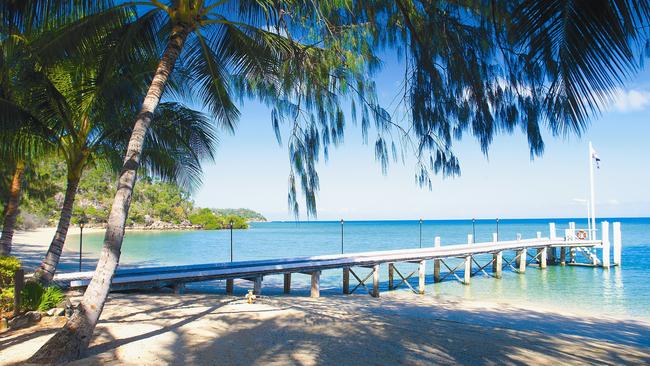Natural disasters fuel ‘crazy’ insurance premiums
Australia’s natural disasters are pushing insurance costs to ‘crazy’ levels, regional businesses say.

Australia’s natural disasters are pushing insurance costs to “crazy” levels, regional businesses say, as insurers brace for a flood of new claims caused by bushfires raging across the nation.
A horror year for regional Australia, book-ended by massive floods in North Queensland and then savage bushfires across the country, is flowing through to insurance premium increases for regional business, with ASX-listed Reef Casino Trust telling shareholders on Monday it had struggled to extend the policy on its Cairns luxury hotel on “commercially reasonable terms”.
The operator of the five-star hotel and casino resort complex said challenging market conditions had made insurers less willing to extend “commercially reasonable terms” to certain types of natural disasters, and pushed its annual insurance costs up by 60 per cent.
Its insurer had imposed limits on claims for cyclone damage, flood and “action by sea, tidal wave and high water”, and pushed its annual premium up by $487,000 to $1.3m.
“Property damage and business interruption coverage has an unchanged overall policy loss limit, but reduced sub-limits for events including named cyclones (up to $25m), flood (up to $5m) and action by the sea, tidal wave and high water (up to $1m),” executive director Allan Tan told the market.
Computershare founder Chris Morris, who owns a $300m tourism portfolio in North Queensland including the luxury Orpheus Island just south of Hinchinbrook Island and the Townsville Casino, has resorted to self-insuring by increasing the excess because insurance policies had gone “crazy’’ in the Sunshine State.
“Insurance everywhere, even security insurance for hotels, has gone up three times,” Mr Morris told The Australian yesterday.
“My problem with it is every property is put into the same class by the insurer no matter its history,” said Mr Morris, who also controls pubs in Western Australia, NSW and Victoria.
Mr Morris self-insures or pledges to pay the first $2m to $3m in damage on most of his tourism assets, including Orpheus Island.
“We don’t take insurance out,” he said.
“We put money away in case something happens.
“We have had to do this in Queensland.
“It’s impossible to get cyclone insurance in Queensland.
“All insurance in Queensland has gone crazy.”
At Townsville Casino, which Mr Morris bought in 2014, the insurer wanted to increase premiums threefold even though the casino did not sustain any flood damage from the Townsville floods almost a year ago. “Even Cyclone Yasi in 2011 went straight over the top of the casino — the building is like a rock.
“Insuring in Cairns and Townsville is multiple times dearer than the other states,” Mr Morris said.
“And because it’s Cairns you have to pay flood insurance, no matter what its history.”
The Reef Casino disclosure comes as insurers brace for a flood of new claims from businesses and homeowners from the massive fires in NSW, Victoria and South Australia, which have damaged or destroyed thousands of properties already.
According to the Insurance Council of Australia, more than $238m of damage has already been logged since November 8 in 3870 claims from 236 postcodes across the country — a figure that is expected to be dwarfed by the final tally.
February’s Queensland floods led to claims worth about $1.3bn, according to the Insurance Council of Australia, which warned federal Treasurer Josh Frydenberg in its annual budget pre-budget submission that the federal government should prioritise mitigation and prevention funding in order to reduce the community’s exposure to natural disasters.
“We acknowledge that mitigation funding has recently been increased by $50m. However, it still falls significantly short of the $200m annual total for mitigation funding that the Productivity Commission recommended in 2014 in its report on Natural Disaster Funding Arrangements,” the ICA said.
The ICA’s budget submission mirrors September comments made by the Australian Prudential Regulation Authority, which regulates the insurance industry, to an ACCC inquiry into insurance in Northern Australia.
APRA noted that only about 40 per cent of Australia’s disaster costs are insured, and said the best way to mitigate the impact of climate change and associated weather-driven disasters was to spend ahead of time to mitigate their impact.
“In Australia 97 per cent of disaster funding goes to clean-up and recovery, with only 3 per cent on prevention and mitigation,” the submission said.
“In APRA’s view, the only way to drive real and meaningful change is by reducing the underlying natural peril costs. This can only be achieved through avoiding or mitigating the underlying natural peril risk: reducing the risk reduces the ongoing cost. Any other mechanism simply shifts who pays the costs — to the individual asset owner, other policyholders and taxpayers.”
Opened in 1996, the Reef Hotel Casino is Cairns’ only casino. It was the target of a takeover bid in 2013 from Hong Kong billionaire Tony Fung, who planned to use the acquisition as a launchpad for a multi-billion-dollar gambling resort complex in the north Queensland city, but dropped the bid after falling afoul of regulators.
The Reef Casino Trust booked a net profit of $5m in 2018.


